The best cities for digital nomads in Brazil
In the past few years, digital nomadism became a reality for many people, including myself. I resigned from my on-site job to work remotely as a writer while I travel around my home country, Brazil. It’s such a big and diverse country that I’ve been going around for 3 years and still haven’t gotten tired of it! In this article I’ll talk about the best cities for digital nomads in Brazil, from my own experience.
But what makes a city good for nomads like me (and probably yourself)? If you are used to working and traveling at the same time, you must know that some destinations are great for vacations but may not be so interesting for remote workers. For example, on an isolated island off the coast, the internet connection may be bad, or the cost of living might be too high for someone who’s always on the road.
Before choosing a city to live and work, I think about costs, internet access, climate, and attractions, among other important points. I took all that into consideration to put together this list of my favorite destinations to work remotely in Brazil, mixing big cities with smaller, lesser-known destinations.
Bonus tips: at the end of the article I’ll tell you how to get free accommodation in these cities and many other great locations for digital nomads around the world, and how to get a good medical travel insurance and be covered while you’re in Brazil and elsewhere.
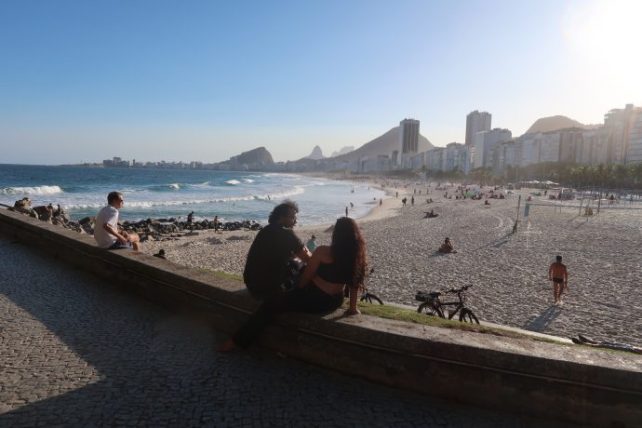
10 best cities for digital nomads in Brazil
Florianópolis, Santa Catarina
The capital of the state of Santa Catarina, in the South of the country, is one of the best destinations for digital nomads in Brazil who love nature.
Florianópolis has a population of just over 500 thousand inhabitants and covers more than 40 beaches, waterfalls, trails, parks and a coastline with a walking trail and cycle path.
In addition to the natural beauty, the city often hosts artistic and cultural events, many of them free. Florianópolis is also a technology hub and home to several innovative companies, and you’ll find plenty of coworkings and colivings there.
On the other hand, the cost of living can be quite high, especially in the city center and surrounding areas. Traffic in the central region of the island is also a little chaotic. But the good part about being a nomad is that you can choose any place on the island to live and work, so I suggest staying further away from the center. Campeche, for instance, is a great choice.
The best time to go to Florianópolis, if you want to enjoy the heat and the beach, is during the months of November, December, March, and April. January and February are high season, and the city is full of tourists; consequently, everything becomes more expensive and crowded.
From May to October there is little rain, and despite the cold, the days are usually sunny. It’s a good time to practice outdoor sports, go on hikes and enjoy the island’s delicious sea food.
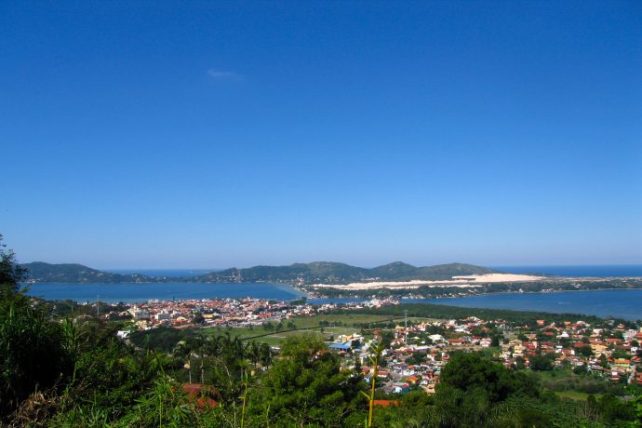
Keep reading: Where to stay in Florianópolis, Brazil
Ubatuba, São Paulo
Ubatuba is a city on the coast of São Paulo state with approximately 92 thousand inhabitants, located just 230 kilometers from the city of São Paulo. Ubatuba’s coastline covers more than 100 beaches along its 90 kilometers of length, as well as many islands.
For nomads who like nature and adventure, Ubatuba is one of the best cities to live. It has beaches suitable for surfing, others ideal for kayaking and stand up paddleboarding, and some perfect for snorkeling. In addition to numerous hikes, rivers, and waterfalls on the outskirts of the city.
Despite being a beach town, Ubatuba has a good infrastructure, with a good accommodation offer and all types of commerce. Since it’s close to the capital of São Paulo, the city is quite busy, especially on weekends and holidays.
The best time to visit Ubatuba is during autumn and winter (March to September), when the climate is milder and drier. During the summer season (December to March), the beaches are crowded, and the cost of living goes up a lot.

Rio de Janeiro, Rio de Janeiro state
The city of Rio de Janeiro has more than 6 million inhabitants, making it the second most populous capital in Brazil, behind only São Paulo. If you like the combination of a big city, a thriving party scene and easy access to nature, Rio is one of the best cities for digital nomads in Brazil. There are plenty of beautiful beaches, trails, tourist attractions, bars, restaurants, coworking spaces, and cafes.
Despite being a huge city, some neighborhoods further away from the center, such as Recreio dos Bandeirantes and Barra da Tijuca, are relatively quiet regions with a lower cost of living than the famous Copacabana and Ipanema beaches, for example. If you stay closer to the beginning of Barra, there is a subway that connects this region to other parts of the city.
I also recommend living in neighborhoods such as Botafogo, Catete and Flamengo. There you’ll be close to Lapa’s party district, the historical City Center, and the Aterro do Flamengo Park (where there’s a beach with a view to the Sugar Loaf), and just a few metro stations from the city’s most famous beaches.

Another positive aspect of Rio for digital nomads is that it is located near the state’s mountain region, with interesting towns like Petrópolis and Teresópolis and the beautiful Serra da Bocaina and Itatiaia National Park just a few hours away. It is also close to paradisiacal beaches such as Búzios, Arraial do Cabo, Ilha Grande and Paraty.
The best time to live in Rio is between March and November. Autumn, from April to June, is ideal: weather is usually super nice. High season runs from December to February; It’s best to avoid these months, as the city is very crowded and accommodation prices go up a lot, especially at New Year’s and Carnival. In winter, which runs from July to September, the temperature doesn’t drop much and on some days it’s still possible to enjoy the beaches.
Keep reading:
Where to stay in Rio de Janeiro: best accommodation tips
Rio de Janeiro for Digital Nomads: firsthand experience
Itacaré, Bahia
Itacaré is a town on the coast of Bahia with approximately 27 thousand inhabitants. For those who like small and cozy destinations, this is the ideal place. The city has more than 15 beaches and is one of the few places in Bahia with good waves for surfing.
One of the aspects that make Itacaré one of the best cities for digital nomads in Brazil is that you can do everything on foot. The beaches are close to the city center, and you reach the seaside by walking just a few minutes. It’s also quite safe.
For those who like a lot of nightlife and cultural events, Itacaré may not be a good choice, despite having some lively bars. And if you are that traveler who looks for a different coworking space every day, know that this will not be possible there either. It is important to rent accommodation that has the minimum comfort to be able to work.
As it is a tourist city, there are many properties available for short-term rent at different price ranges. In Itacaré the weather is hot all year round; try to avoid high season (December to March) if you prefer to see the city at a calmer pace.
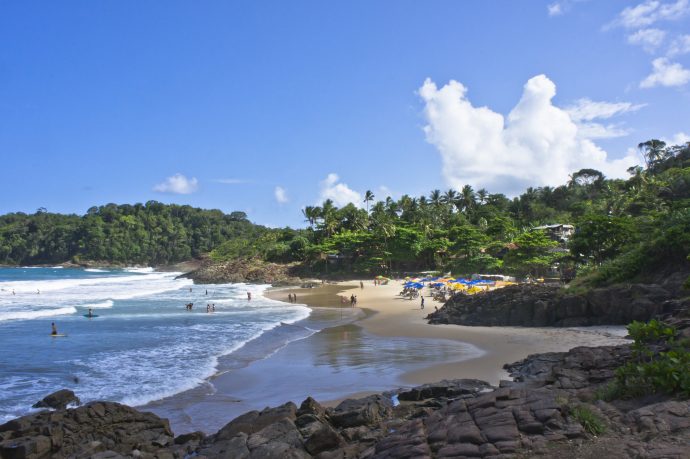
Lençóis, Bahia
Lençóis is the main hub for exploring the Chapada Diamantina National Park, in Bahia. It is a town with just over 11 thousand inhabitants, with charming cobblestone streets and colorful houses, surrounded by many rivers, trails and waterfalls.
I didn’t have many expectations about this destination, but as soon as I arrived, I was pleasantly surprised. I ended up spending several months there and discovered a passion for small towns. Despite being small, it has good infrastructure, as it is the most important city in a touristic area.
One of the points that make Lençóis one of the best cities for digital nomads in Brazil is the cost of living: there are many houses for short term rent for at good prices. I was also quite happy about the weekly market of local producers with vegetables, breads, sweets, cakes, and various other homemade delicacies. Everything is very cheap and tastes amazing!
The best time to visit Lençóis is from May to October, which is the dry season. The temperature is pleasant, hot during the day and slightly cold at night, with a maximum of 26°C and a minimum of 17°C.


Porto Seguro, Bahia
From the list of cities for digital nomads in Brazil, Porto Seguro is one of my favorites. More specifically, Arraial d’Ajuda, which is a district of Porto Seguro. The city itself has almost 150 thousand inhabitants and the district of Arraial has less than 20 thousand.
Arraial d’Ajuda is 7 kilometers away from Porto Seguro and you need to cross a ferry to get there. Once you get there, transportation is easy. Throughout the town there are minibuses that take you to all the beautiful beaches in the region, such as Trancoso, Praia do Espelho, Caraíva and Coroa Vermelha.
Another advantage is that the city is touristy, so the infrastructure is very good, from accommodation, internet, markets, restaurants, and bars. And if you want to leave the calm of the fishing village, just cross the ferry and go to the center of Porto Seguro.
In this region of Bahia it is hot all year round, so you can live, work and enjoy the beaches any time you want. Even in the winter months (July to September) the temperature does not drop below 20°C.
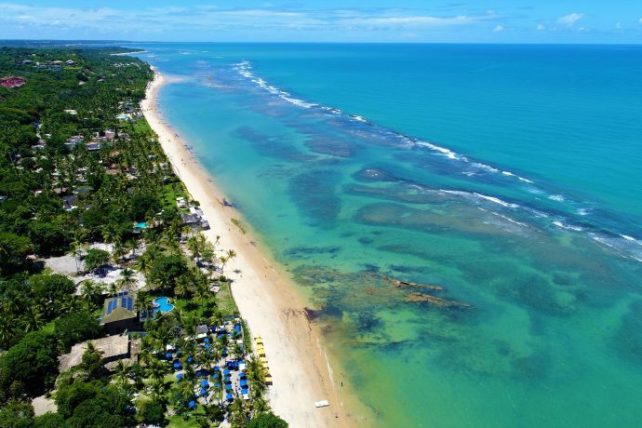
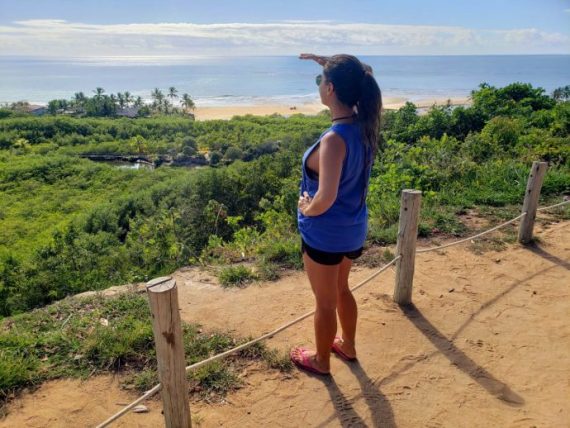
Recife, Pernambuco
Recife is one of my favorite Brazilian capitals because it’s one of the most culturally rich. The artistic scene is very diverse, and locals are usually super proud of their roots.
If you like music and are interested in local traditions, rhythms such as frevo, maracatu, forró, capoeira and samba de coco will amaze you. You can take classes, participate in dances, or just watch. I consider this one of the best cities for digital nomads interested in Brazilian culture.
With more than 1.5 million inhabitants, Recife is considered the capital of the Northeast region (Nordeste, in Portuguese). And the nearby beaches are also very interesting, such as Muro Alto, Porto de Galinhas, Maracaípe and Carneiros.
The cost of living is quite high if you choose to live on Boa Viagem beach, which is an upscale neighborhood in the capital where most hotels are located. There you will find an extensive seaside promenade with a cycle path and bicycles for rent in various corners.
However, there are other neighborhoods with a more affordable cost of living, such as the ones in the north and west zones (Zona Norte and Zona Oeste).
I recommend staying in more residential, but central areas, such as the neighborhoods of Espinheiro and Graças. These are pleasant regions, with a good range of bars, restaurants and cafes, and easy access to the city center, the historical old town (Recife Antigo), and the beach.
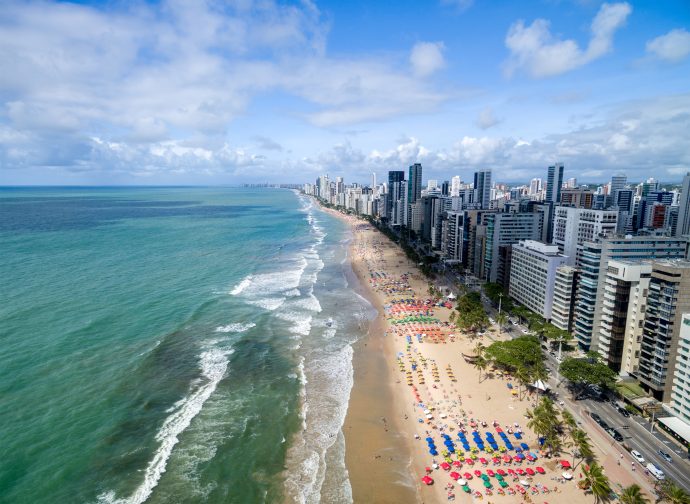
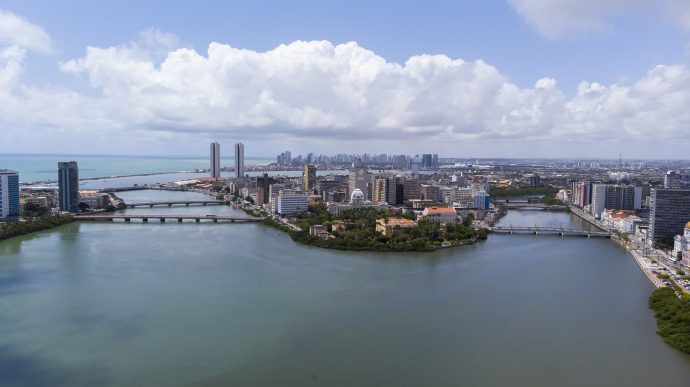
If you enjoy a small town and bohemian atmosphere, consider staying at the Sítio Histórico (historical area) of Olinda, a city located right next to Recife.
The weather in Recife does not vary much; maximum temperatures vary between 30°C in the summer months and 27°C in winter, while minimum temperatures vary between 21°C and 23°C. However, from March do August there are usually heavy rains, especially around June.
If you want to see one of the most beautiful popular festivals in Brazil, go to Recife and Olinda during Carnival, but be aware that accommodation is much more expensive at this time of the year.
Fortaleza, Ceará
Fortaleza is the fourth most populous city in Brazil, with almost 2.5 million inhabitants, behind only São Paulo, Rio de Janeiro, and Brasília (according to the 2022 demographic census). Together with Recife, I consider it one of the best cities for digital nomads if you’re looking for a capital city in the Northeast region.
Its pleasant climate attracts many digital nomads who want to live in a region with warm, sunny days, but with the structure of a big city. The natural beauty of the surroundings is also worth noting, such as the beaches of Futuro, Cumbuco, Flecheiras and Mundaú.
Despite being a large city, the cost of living in Fortaleza is not that high compared to other Brazilian capitals. Of course, the neighborhoods closest to the beaches are more expensive, such as Meireles, Iracema and Aldeota. However, if you stay a little further away, it is possible to find good accommodation at affordable prices.

Torres, Rio Grande do Sul
Torres is a coastal city located in Rio Grande do Sul, almost on the border with Santa Catarina, in the South of Brazil. It is a city with 40 thousand inhabitants, but during the summer season it receives more than 400,000 visitors.
Something that I love about it is the city’s location: it is close to the capitals Porto Alegre, in Rio Grande do Sul, and Florianópolis, in Santa Catarina. In addition to being just a few kilometers from Praia Grande and Cambará do Sul, a region that is home to giant canyons, rivers, waterfalls, and many beautiful hikes.
Torres has a great infrastructure, and outside of the summer season it is possible to find very affordable accommodation, as most apartments and houses are empty.
This is another good city for digital nomads in Brazil that can be visited all year round, but the temperature range is quite big, so consider your preferences. In the summer months, the heat is intense, and in winter it can reach 0°C. In April, the traditional ballooning festival takes place; it’s a great time to be there.
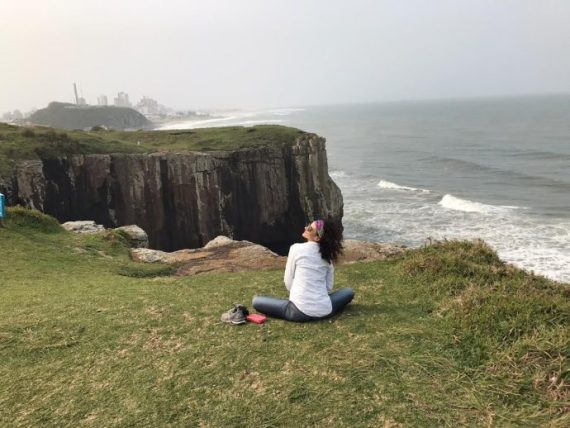
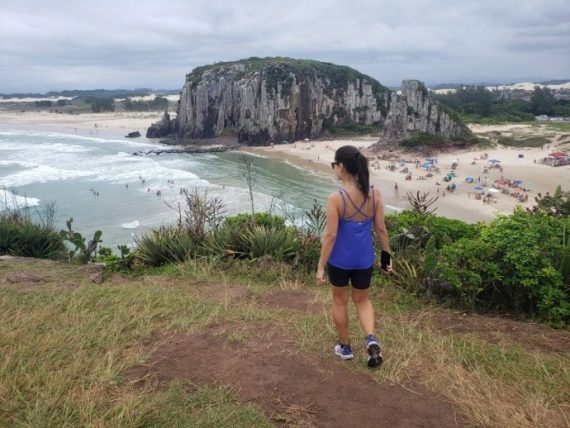
Pirenópolis, Goiás
Pirenópolis is a city in the state of Goiás, with 25 thousand inhabitants, just 150 kilometers away from Brasília, the capital of Brasil, and 130 kilometers from Goiânia, capital of Goiás. It is known for its many waterfalls and its charming historic center, full of colorful houses, cobblestone streets, restaurants, bars and little shops.
Piri, as the peaceful town is called, is very safe and cozy; in just a few days you already feel like you are part of the city. You can do everything by walking, and in a few minutes you will be at the edge of a river or a waterfall.
The cost of living in Pirenópolis is relatively low and the best time to visit is when the rainfall is lower, from May to September. The temperature in the coldest months can reach 14°C at night, but the days are usually warm and sunny.
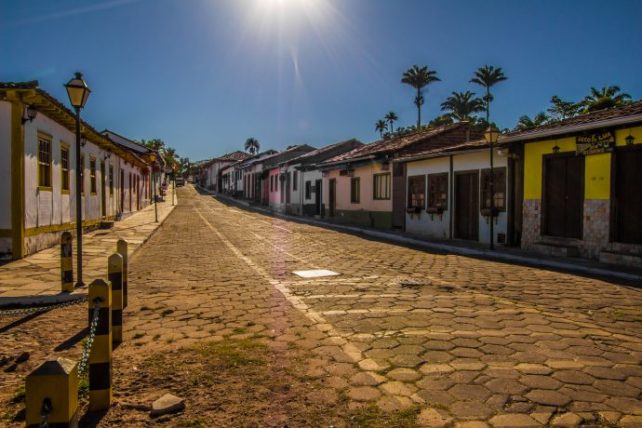
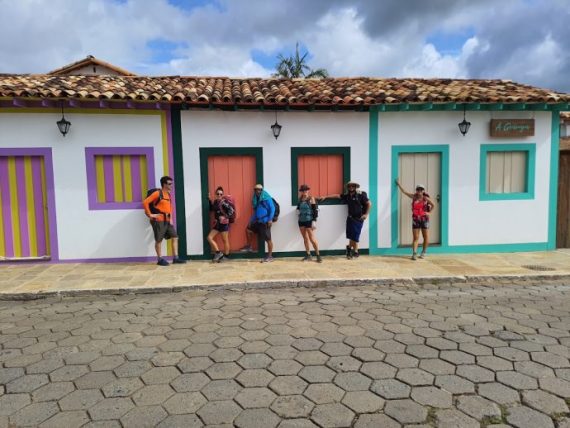
Free accommodation in the best cities for digital nomads in Brazil
Did you know that you can live in all these amazing cities for digital nomads in Brazil, and many other places around the world, without paying for accommodation?
Worldpackers is a platform that connects travelers and nomads with various types of hosts who are looking for volunteers to help with daily tasks through a collaborative exchange. I’ve traveled like this several times, meeting lots of cool people and learning new things while saving money.
The website has hundreds of volunteering or work exchange opportunities throughout Brazil and in more than 140 countries.
For those of us who work remotely, doing a work exchange is awesome because it reduces the cost of living considerably, as you receive free accommodation and other benefits, such as meals and tours.
Furthermore, volunteering is a way to meet local people and other travelers, creating connections even if you don’t have any friends in that destination. For those nomads who travel alone like myself, this makes a huge difference.
You can search for the positions that interest you most for free using the filters on the left side of their page, and check out the reviews from previous volunteers. If you want to apply for a position and chat with the hosts, you must pay a small annual fee. Click here or use the coupon JANELASABERTAS to get a 20% discount. To find out more, read these articles:
Is Worldpackers safe? User review and safety tips
How to do a work exchange: complete guide

Health insurance for digital nomads in Brazil
Here’s another precious tip for digital nomads who are thinking of spending some time in my lovely country: take health precautions.
Brazil’s public health system is free for everyone, including foreign tourists. It’s called Sistema Único de Saúde (SUS) and it’s a system I’m very proud of as a citizen, since I believe health care shouldn’t be exclusive to those who can afford it.
However, it doesn’t always work so well. Many public hospitals are constantly overloaded, have poor infrastructure and can make you wait a lot for treatment. I pay for private medical insurance when I’m in Brazil, and so do most of my friends who can afford it.
And whenever a foreign comes, I recommend they get travel medical insurance. That way, if anything happens, they can have access to private health care, which is usually quite good, without paying.
If you want to do that, I recommend checking out SafetyWing, a Norwegian travel medical insurance created by nomads for nomads. It assures you medical coverage and also travel coverage for flight delays, lost checked luggage and such.
Safetywing is great because it’s super flexible. You can buy the insurance before you depart or at any point during your trip, and you can get a recurrent subscription, so you don’t risk forgetting about it.
Also, you don’t need to inform your itinerary or worry about changing your plans, which so often happens with us nomads. With the same insurance you’ll be covered anywhere you go, except for North Korea, Syria, Somalia, Cuba, Sudan, South Sudan, and Iran.
For more information, check out Safetywing’s website.
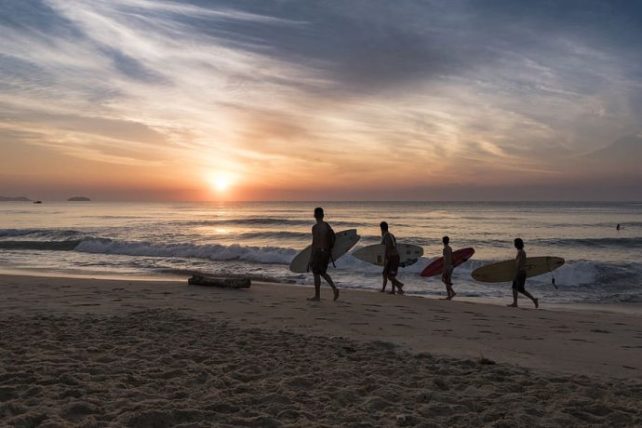
I hope you enjoyed discovering the best cities for digital nomads in Brazil! Do you have any questions? Ask us in the comments!
Article written by Bárbara Nicoli, contributor to the Janelas Abertas blog. Photos by Bárbara Nicoli, Luísa Ferreira and Deposit Photos.
This article contains links that are part of affiliate programs, which means I receive a small commission for every sale made through them and you pay nothing extra for it. I only recommend products and services that I believe in. :)


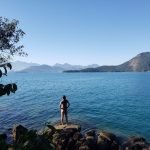
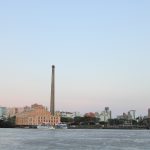
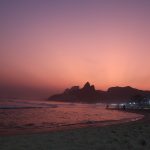





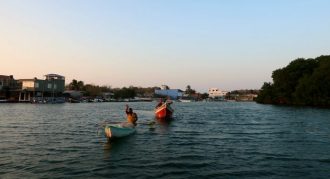





0 Comentários